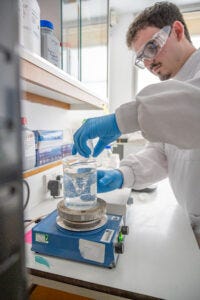Phenotypeca is working with the Bill & Melinda Gates Foundation to produce affordable vaccines through its Quantitative Trait Loci (QTL) tech.
The partnership focuses on producing recombinant albumin affordably as a means of driving down the cost of vaccines for low- and middle-income countries (LMIC).
Challenges associated with global vaccine production include the limited availability of albumin due to high cost of production, but Nottingham, UK-based Phenotypeca claims to address this and achieve global vaccination equity through its QTL technology, which combines the firm’s proprietary breeding method with genomic based screening to optimize strains for a given protein.

c/o Phenotypeca
“QTL is the multi-parameter optimization targeting specific variations of critical locations in the genome that functionally drives key aspects of protein manufacture. These variations are like letters in an alphabet which this technology can uniquely identify to deliver an optimal protein, mainly high-quality albumin for vaccines thereby reducing their costs,” Johnny Cordiner, CEO for Phenotypeca told BioProcess Insider.
Additionally, Phenotypeca aims to create and customize the high-quality recombinant protein albumin, which is crucial for vaccine production.
“In vaccine production, albumin acts as a stabilizer for active ingredients, which is crucial for ensuring the vaccine’s components’ retention of their structural integrity and functionality during storage, transport, and administration,” Chris Finnis, founder and intellectual property director told us.
“By stabilizing these components, albumin helps maintain the vaccine’s efficacy over time. Also, it is a key ingredient for several vital vaccines, particularly measles and rubella, and is difficult to procure as it requires access to large amounts of human serum which often has strong regulations around safe handling.”
With a primary role in the human body to regulate blood volume and pressure by maintaining oncotic pressure, albumin is found in blood plasma and is essential for transporting hormones, vitamins, and metal ions.







